SICK LED modules

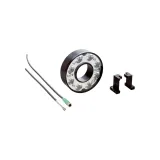
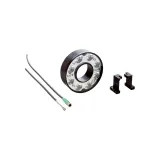
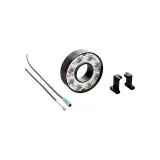
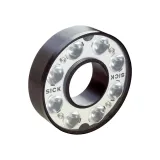
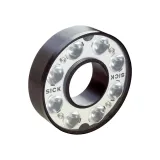


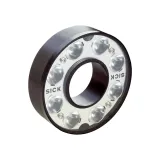
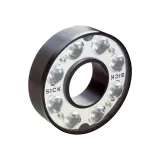
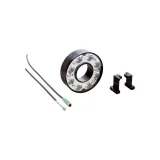
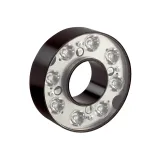
sick led modules for OEM and retrofit builds
SICK supplies board-level light sources that drop into machine housings, enclosures, conveyors, and task luminaires without reworking mechanics. Rigid boards and compact arrays deliver predictable lumen packages, tight color bins, and stable drivers so engineers can lock photometry early and keep service simple on the line.
sick industrial led modules range and formats
Expect two main building blocks. Compact circular and square arrays for high-candela points inside machines or small area heads; and longer rigid boards for gear trays, guards, and aisle bars. Pitch and copper weight are tuned for even luminance and clean thermal paths. Where shallow optics are required, low-profile footprints accept clip-on lenses or secondary diffusers; sealed variants serve splash and humid zones.
Technical specifications and standards
Electrical: constant-current or constant-voltage topologies by series (typical CC 350/500/700/1050 mA; CV 24 V DC). Power classes span ~5–60 W per board, with efficacy commonly 135–190 lm/W depending on CCT and CRI. Photometry: CRI 80 standard and CRI 90 options; CCT sets at 2700/3000/3500/4000/5000/6500 K; color stability SDCM ≤3 across production. Thermal: metal-core substrates and wide copper planes keep tc ≤85–90 °C for long life; accessible measurement pads simplify commissioning checks. Lifetime is stated via LM-80 data with TM-21 projections (L80/L90 at 50–100k h, driver-dependent). Compliance: modules to EN 62031; control gear to IEC/EN 61347-1/-2-13; EMC to EN 55015 and EN 61000-6-x; photobiological safety per EN 62471. Surge protection is addressed upstream—spec 1–2 kV on DC rails and 4–6/6–10 kV on mains drivers feeding the boards.
sick high power led modules thermal and optical design
High-density arrays pair multi-die packages with thick MCPCB cores, generous solder pads, and thermal vias under optics. Heatsink interface areas are flat and anodized for consistent Rθcs; plan ≥1.5–2.0 K/W of total path headroom in hot bays. Optic options include 20–60° punch beams and 30×90° aisle lenses; deep reflectors or prismatic caps keep high-angle luminance under control near operators.
sick linear lighting modules drive and optics
Rigid bars in 280/560/1120 mm classes support through-wiring, 1–10 V or DALI-2 dimming (via the chosen driver), and click-in lens families for wide, narrow, and low-UGR distributions. For long runs, dual-feed or mid-tap to hold voltage drop under 5 %; document feed direction and segment count so installers don’t chase dim tails.
Applications and compatibility across equipment
Machine interiors: narrow beams for cutting zones and inspection windows without flaring glass. Control cabinets: low-power boards behind opal covers to light terminals uniformly. Intralogistics: aisle optics drive lux down the pick face with fewer poles. Food & beverage: sealed lenses, stainless fasteners, and detergent-resistant gaskets. Cold rooms: drivers validated for low-temperature start; choose lower drive current to maintain tc margin. Hospitality/retail fixtures: CRI 90 and warm CCTs for finishes and food. Designers who standardize on sick led light engines avoid vendor drift when spares are pulled months after handover.
Integration with SICK controls and wiring
Boards land cleanly alongside IO-Link masters, push buttons, and terminal blocks already specified for machines. Keep SELV and mains in partitioned trunking; bond shields 360° at entry plates; match compression gland ferrules to jacket OD to preserve IP. Where service speed matters, pre-terminate pigtails and use keyed connectors from the SICK connection catalog. If the project also uses sick lighting modules for coves or racking, share drivers and control topology (1–10 V or DALI-2) to keep spares lean.
Selection guide for B2B buyers with sick modular led systems
Start from maintained lux and task geometry, then choose beam and board class.
• Thermal: size the sink so tc stays within spec at worst-case ambient; derate in sealed or high-altitude enclosures.
• Electrical: pick CC for tight current sharing across series strings; pick CV where parallel segments simplify field swaps.
• Color: lock CCT/CRI per zone; reserve CRI 90 for QA benches and front-of-house.
• Controls: set dimming curve and minimum level during commissioning; publish PstLM/SVM targets wherever cameras or machine vision are present.
• Mechanics: confirm lens clearance, screw pattern, and isolation distances; include safety-wire points on heads above walkways.
Advantages of working with Bankoflamps
We align board lengths, optic codes, and driver interfaces to your trays and machine list, then show live EU stock before lifts or shutdowns are booked. Quotes arrive in about an hour with EAN/MPN so CCT, CRI, W/class, surge level, IP, and mounting packs don’t drift mid-phase. Your portal presents lead times, shipment progress, and downloadable price files; pricing validity tracks project gates. Approved clients can use post-payment up to 30 days. We consolidate by cell/aisle to cut freight and night work, and your account manager cross-checks feed topology, tc margins, control type, lens family, gasket sets, and gland threads against your drawings—so cartons land site-ready and crews light once.